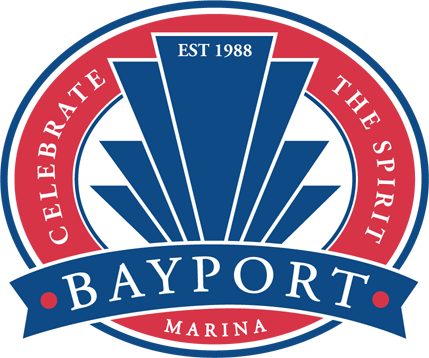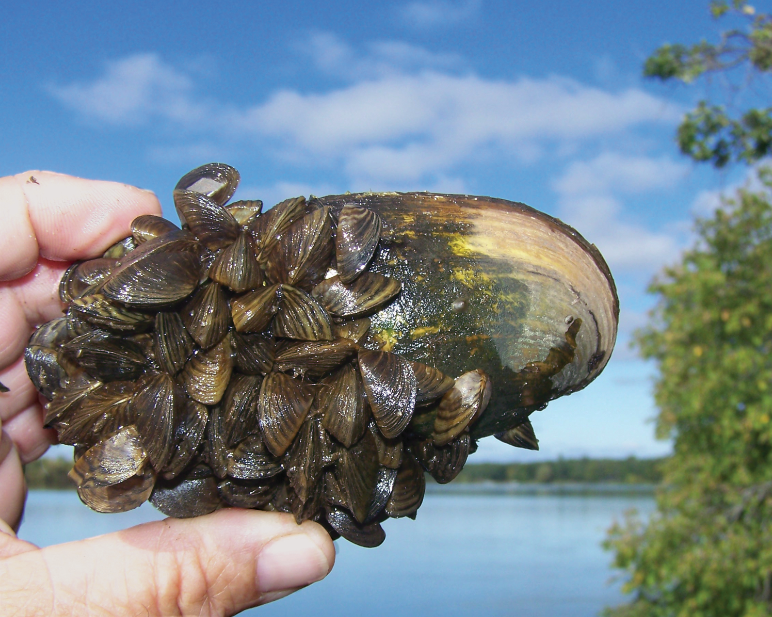Fast Facts about the River
You may have noticed that you can’t take your boat any further north than the Stillwater High Bridge. This is due to an aquatic invasive species called zebra mussels, which are extremely harmful to the St. Croix’s 41 species of native mussels. Zebra mussels were discovered in the St. Croix Riverway in 2000. In an effort to contain them, the National Park Service decided to restrict travel any further north. Check out this link to learn more about the impact of zebra mussels and what you can do to ensure our northern waterways remain diverse and free of this invasive species.
Ways to Protect the River
Always clean, drain, and dry your boat and other recreational equipment if you move between waterbodies. Zebra mussel veligers – the larval life stage of zebra mussels – are microscopic and a single cup of water can transport hundreds of them.
The St. Croix River Association is dedicated to preventing the spread of aquatic invasive species as we protect, restore and celebrate the St. Croix River and its watershed.
Learn more about our programs and ways you can get involved by visiting our website at stcroixriverassociation.org.
Zebra mussel (Dreissena polymorpha)
|
|
|
|
Species and Origin: Zebra mussels are small, fingernail-sized animals that attach to solid surfaces in water. Adults are 1/4 to 1-1/2 inches long and have D-shaped shells, often with alternating yellow and brownish colored stripes. Female zebra mussels can produce 100,000 to 500,000 eggs per year. These develop into microscopic, free-living larvae (called “veligers”) that begin to form shells. After two to three weeks, the microscopic veligers settle and attach to any firm surface using tiny fibers called “byssal threads.” Zebra mussels are native to Eastern Europe and Western Russia and were brought over to the Great Lakes in the ballast water of ships. Populations of zebra mussels were first discovered in the Great Lakes in 1988.
Impacts: Zebra mussels can be a costly problem for cities and power plants when they clog water intakes. Zebra mussels also cause problems for lakeshore residents and recreationists; for example, they can:
- attach to boat motors and boat hulls, reducing performance and efficiency,
- attach to rocks, swim rafts and ladders where swimmers can cut their feet on the mussel shells, and
- clog irrigation intakes and other pipes.
Zebra mussels also can impact the environment of lakes and rivers where they live. They eat tiny food particles that they filter out of the water, which can reduce available food for larval fish and other animals, and cause aquatic vegetation to grow as a result of increased water clarity. Zebra mussels can also attach to and smother native mussels.
Status: Zebra mussels have spread throughout the Great Lakes, parts of the Mississippi River, and other rivers and inland lakes. They are established in Minnesota and were first found in the Duluth/Superior Harbor in 1989. See the infested waters list for more information on water bodies in Minnesota where zebra mussels have been found or water bodies that are closely connected to zebra-mussel-infested waters.
Control: The DNR, with partners, has used pesticides to treat zebra mussels in several Minnesota lakes since 2000. The DNR will consider permitting pilot projects to control zebra mussels in public waters with pesticides beginning in 2015.
- Fact sheet about zebra mussels

- Questions and answers about pilot projects to control zebra mussels in public waters
How to prevent their spread: Mussels attach to boats, nets, docks, swim platforms, boat lifts, and can be moved on any of these objects. They also can attach to aquatic plants. Attached adult mussels can survive out of the water and spread from one water body to another. Microscopic larvae (veligers) can survive in water contained in bait buckets, bilges, ballast bags or any other water moved from an infested lake or river. In Minnesota, you must take the following steps to prevent the spread of zebra mussels:
- clean weeds and debris from your boats, and remove any attached zebra mussels,
- drain your boat, live-wells, and bait-wells, and keep all drain plugs out while traveling,
- dispose of unwanted bait in the trash, and
- dry docks, lifts, swim rafts and other equipment for at least 21 days before placing equipment into another water body.
Additional recommendations for reducing the risk of spreading zebra mussels.
Scuba divers can view and share these guidelines for planning your dive and cleaning gear.
How can you help?
- Become a volunteer zebra mussel monitor – look for zebra mussels on boat hulls, swimming platforms, docks, aquatic plants, wood and other objects along the shoreline, and report your efforts annually.
- Report suspected new infestations to the DNR by calling 651-259-5100.
Regulatory Classification: It is a prohibited invasive species, which means import, possession, transport, and introduction into the wild is prohibited. Boaters visiting the St. Croix River should contact the National Park Service for regulations on that river north of Stillwater, MN.
Zebra Mussel Survey in Lake Ossawinnamakee
Come underwater with DNR biologists to see zebra mussels feeding and attached to a variety of surfaces in Lake Ossawinnamakee. This footage was taken in August 2007.
Further information
- List of Infested Waters (Includes waters infested with zebra mussels)
- Zebra mussel information and U.S. distribution (U.S. Geological Survey)





